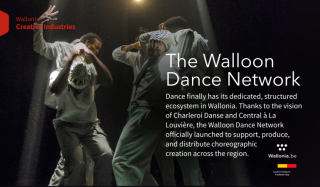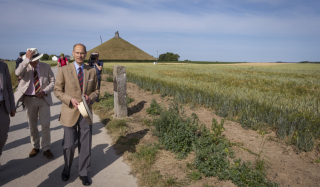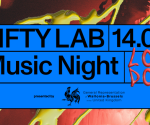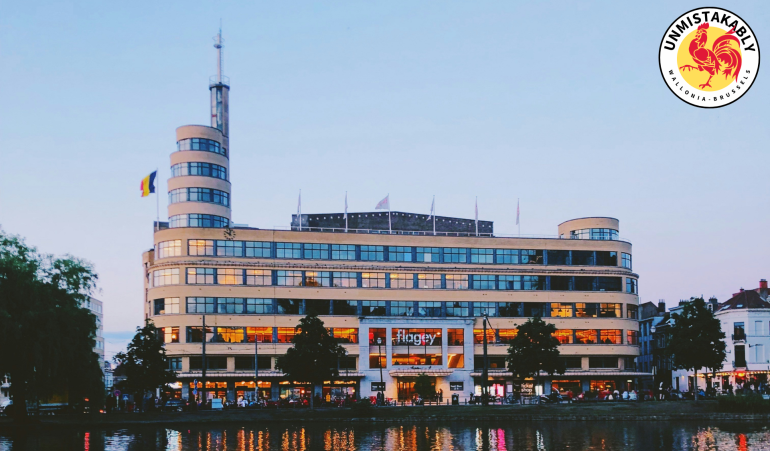
On the occasion of the centenary of the "International Exhibition of Modern Decorative and Industrial Arts" in Paris (1925), Brussels is rolling out the red carpet for its Art Deco heritage, shining a spotlight over iconic buildings that continue to captivate art and architecture enthusiasts around the world.
Ranging from stately facades to ornately designed interiors, the city’s 2025 event (Art Deco Brussels 2025) promises a season of guided tours, workshops and exhibitions celebrating an era that shaped Europe’s metropolitan skyline – often outshining a number of illustrious destinations.
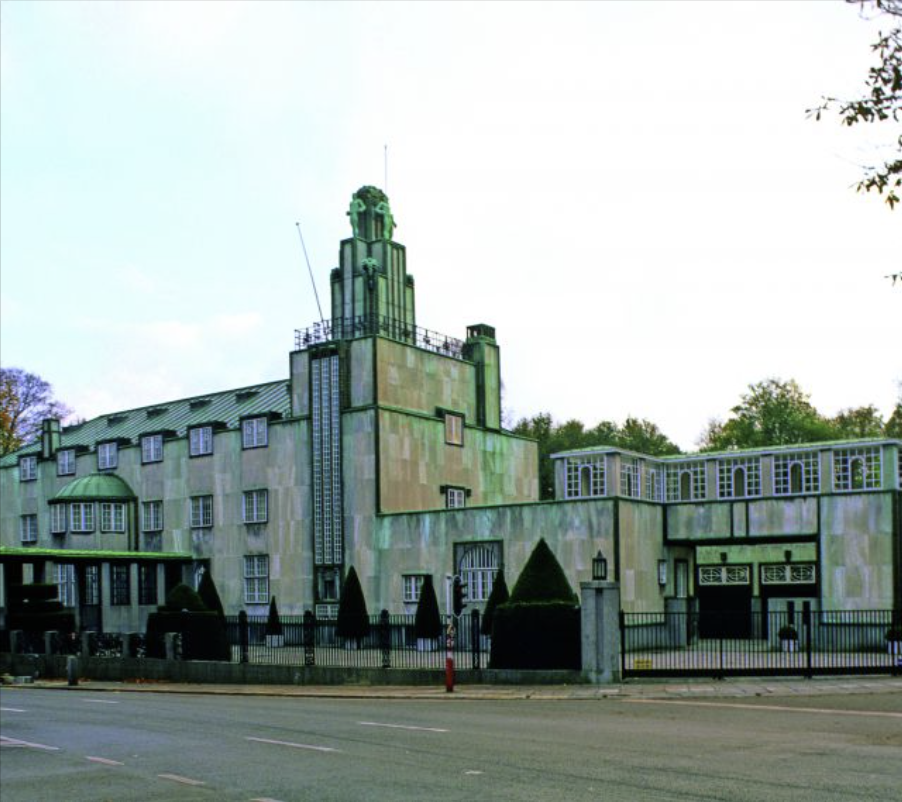
Stoclet Palace
Art Deco: A Brief Overview
Emerging in the early 20th century, Art Deco is often characterized by an array of geometric shapes, a disposition for bold colours and lavish ornamentation, symbolizing both modernity and progress.
The style made its mark at the 1925 at the International Exhibition of Modern Decorative and Industrial Arts in Paris, bringing a departure from the intricate designs of Art Nouveau.
Belgian Origins and Early Enthusiasts
In Belgium, Art Deco arrived shortly after World War I, pioneered in 1919 with Victor Horta’s conceptual work on the Palace of Fine Arts in Brussels. The momentum carried swiftly into Wallonia, where cities like Liège and Charleroi championed the movement in residential, public, and ecclesiastical architecture throughout the 1920s and 1930s.
A remarkable feature of Wallonian Art Deco was its use of industrial materials abstracted into decorative art: marbrite (opaque coloured glass) and cimorné (ornamental cement), both invented and popularised in the interwar period. These materials, affordable and locally produced, allowed even modest communities to embrace the aesthetic with flourish and cultural pride.
Immediately recognizable by its uniformed fusion of creative detailing and modern geometry, stone facades and ironwork pay homage to a past of avant-garde design, expressing the Belgium’s inclination toward vibrant yet understated elegance.
The resulting blend has a peaceful-like charm; each and every building reveals a story of craftsmanship honed through generations of Belgian artistry.
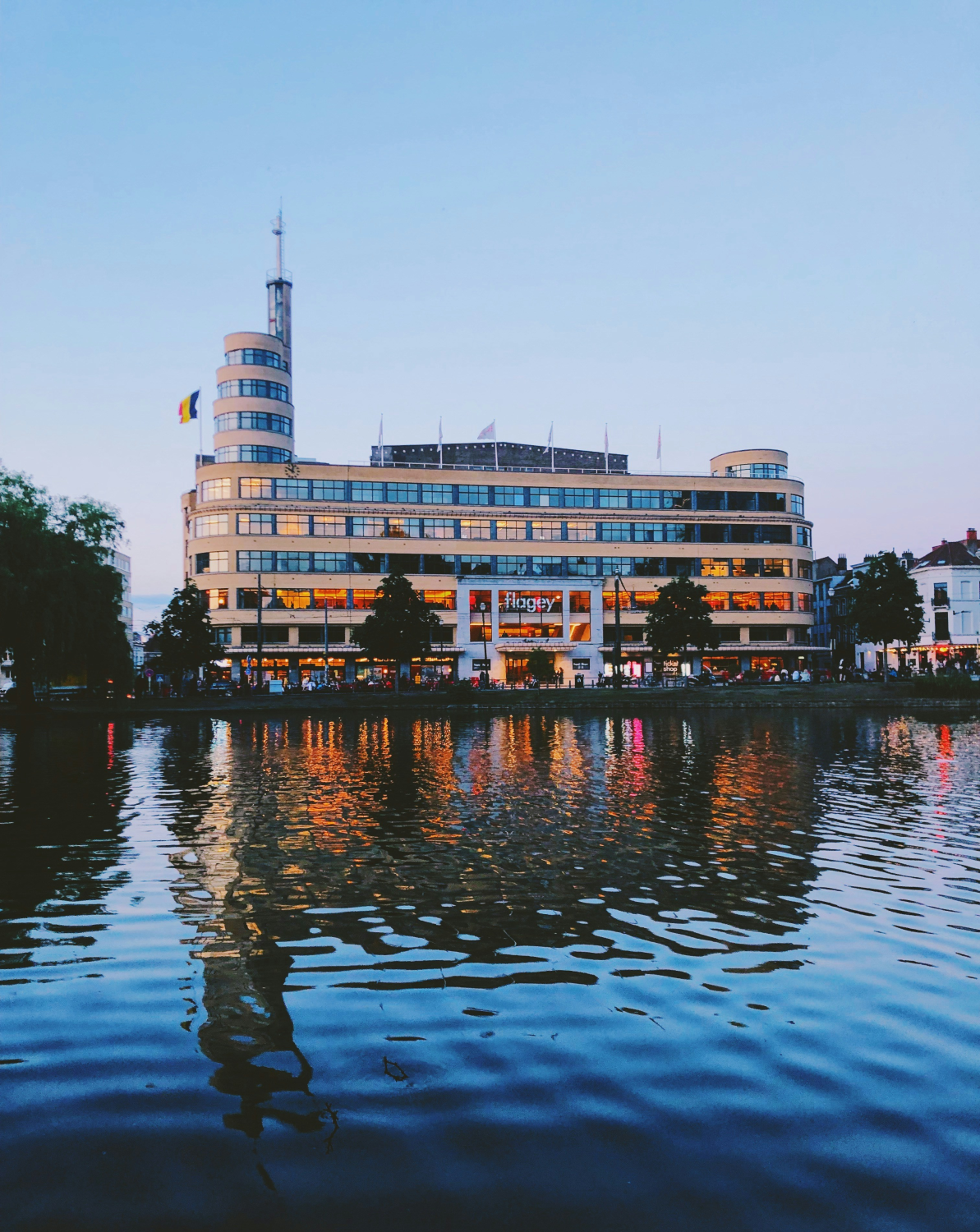
Flagey Building
Belgium’ Art Deco Landmarks
The whole country boasts a rich collection of Art Deco architecture, reflecting their wholehearted embrace of this modern aesthetic.
Notable landmarks include:
- Stoclet Palace (Brussels): Designed by Austrian-Moravian architect Josef Hoffmann, this luxurious mansion is a foundational example of early Art Deco architecture, showcasing a variety of geometric forms and elaborate materials.
- The Forum (Liège): Open since 1922, this Art Deco gem, designed by architect Jean Lejaer, offers a unique atmosphere cherished by both artists and the public. Jacques Brel, Louis Armstrong and Edith Piaf have all performed here.
- Flagey Building (Brussels): Once the headquarters of the National Institute of Radio Broadcasting, this building exemplifies the many streamlined forms typical of Art Deco design.
- National Basilica of the Sacred Heart (Brussels): One of the world’s most significant Art Deco churches, combining traditional religious architecture with various modern design elements.
- Maison du peuple (Dour): Designed by architect Philippe-Alphonse Vancraenenbroeck back in 1929, this triangular building with a rather austere brick facade, has been listed in the Walloon heritage inventory since 1982.
- Van Buuren Museum & Gardens (Brussels): A private residence turned museum, this site offers unique glimpses into Art Deco interior design and landscaping.
- Maison Bertinchamps (Charleroi): Designed by architects Marcel Depelsenaire and Jules Laurent, the building offers remarkable stonework workmanship, and, most notably, colorful Art Deco geometric stained glass windows, offsetting the sobriety of the facade.
A Light-Hearted Rivalry with the City of Love
Whilst Paris is often revered for its many Art Deco landmarks, Brussels sets itself apart with a more subtle, almost elusive-like flair. It is less about grandiose gestures and more about finding harmony between the building and its surroundings.
Visitors quickly discover that these architectural treasures provide Brussels with a particularly distinctive personality: recognizable enough to rival larger metropolises, yet understated enough to preserve its own quirky character.
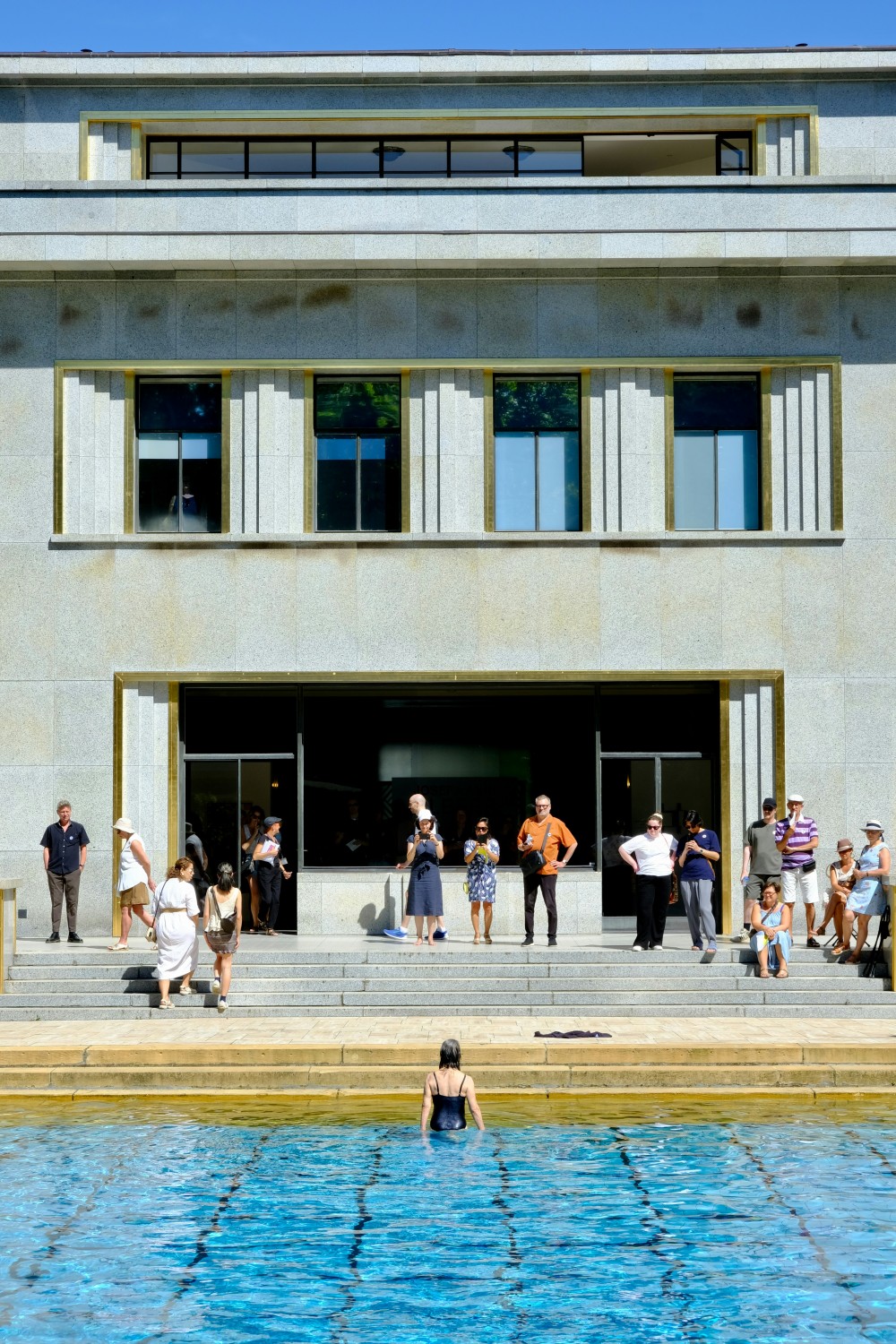
Villa Empain
The city's Art Deco architecture typically incorporates local materials and craftsmanship, resulting in numerous treasured designs which reflect Belgium's cultural heritage.
This subtle differentiation provides a new-found perspective on the movement, notably distinguishing Brussels' architectural landscape from that of Paris.
Highlights of Art Deco Brussels 2025
- BANAD Festival (March 15–30, 2025)
The Brussels Art Nouveau & Art Deco Festival opened about 60 rarely seen venues in three weekend blocks with themed guided tours—by foot, bus, and bike—plus conferences, family activities, and a restaurant fair. New this year: exclusive openings of the Averbouch and Slagmolder houses, the former Electrorail HQ, and the Orthodox Synagogue in Anderlecht
- Art Deco 1925 >< Mode 2025 — Halles Saint-Géry (May 27–Nov 16, 2025)
A stylish interplay between past and present: ten contemporary Brussels fashion designers reinterpret the sleek codes of 1920s/30s Art Deco through original silhouettes
- Around Art Deco: Interbellum Sculptures — Van Buuren Museum & Gardens (April 24–Sept 28, 2025)
A garden-stage exhibition spotlighting sculpture of the interwar era—featuring Belgian and international artists like Rik Wouters and Ossip Zadkine—integrated into the historic landscape
- Heritage Days (Sept 20–21, 2025)
The annual event will centre on the theme "Art Deco, Roaring Twenties, Crash Years," offering free tours and building openings across Brussels focused on the style
- Year-round Guided Tours & Events
Throughout 2025, local associations such as ARAU, Arkadia, Brussels Art Deco Society, Pro Vélo, and Explore Brussels are organizing guided walks and cultural events—including film screenings, evening lectures, and architecture talks at sites like Flagey, Bozar, UGC de Brouckère, Basilica of Koekelberg, and more
Embrace Brussels’ Art Deco Tradition
In celebrating its Art Deco heritage, Brussels offers a spectacular perspective on a design movement that still to this day influences modern architecture.
Art Deco Brussels 2025 Commissioner – Sir Paul Dujardin, commented; “With this programme, we aim to build on the dynamics of the very successful Art Nouveau year by offering Brussels another exceptional cultural experience.”
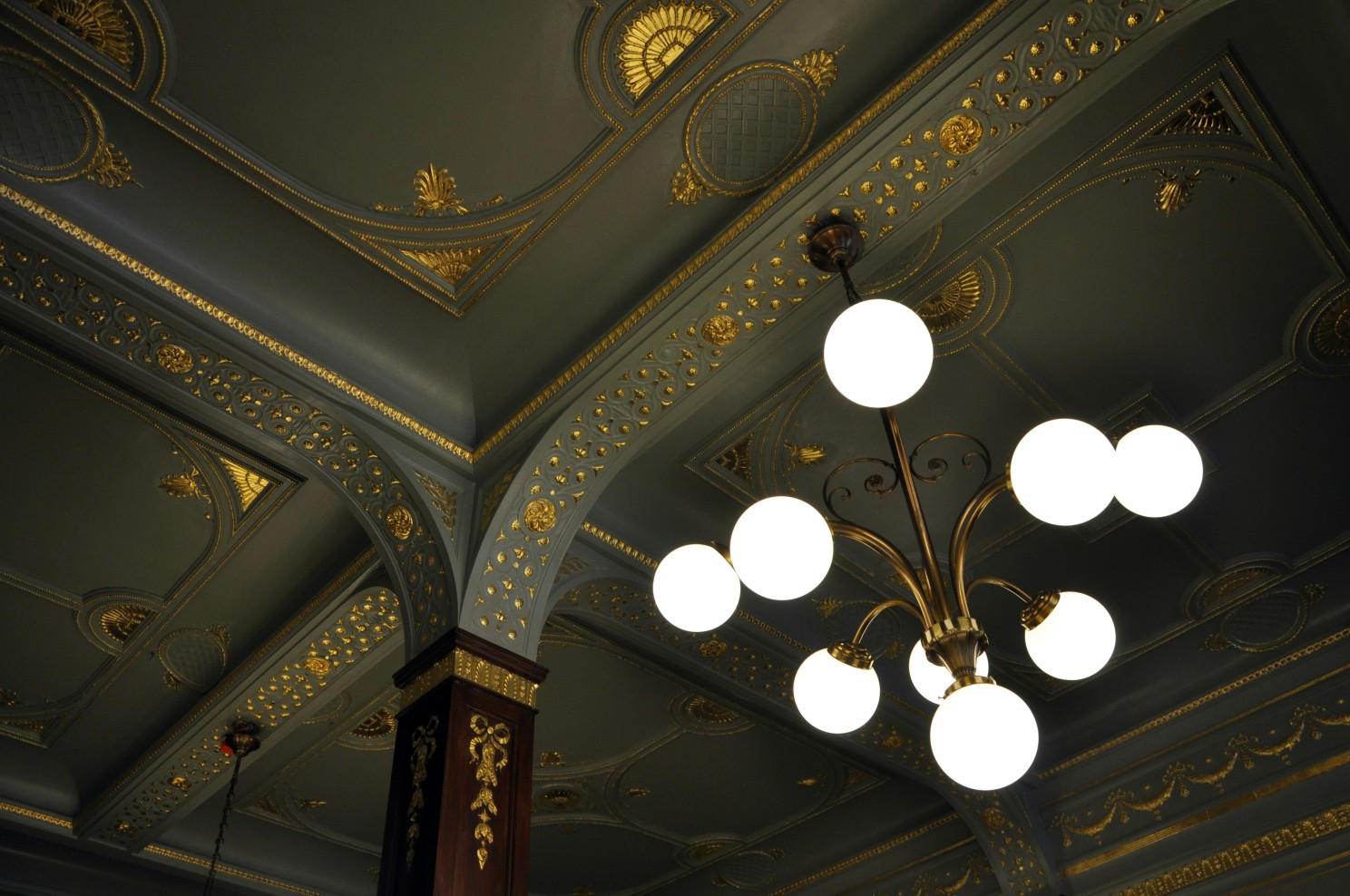 Café Greenwich
Café Greenwich
Alongside the coordination efforts of Sir Dujardin, Urban Brussels and Visit Brussels will co-organize the event, with the primary aim of delivering both quality and fascination.
Whether you are exploring majestic lobbies, intricate iron railings or learning from experts inside workshops, this year-long event offers you a chance to rediscover a city which confidently stands on its own – serenely leaving its mark as one of Europe’s leading Art Deco destinations.
